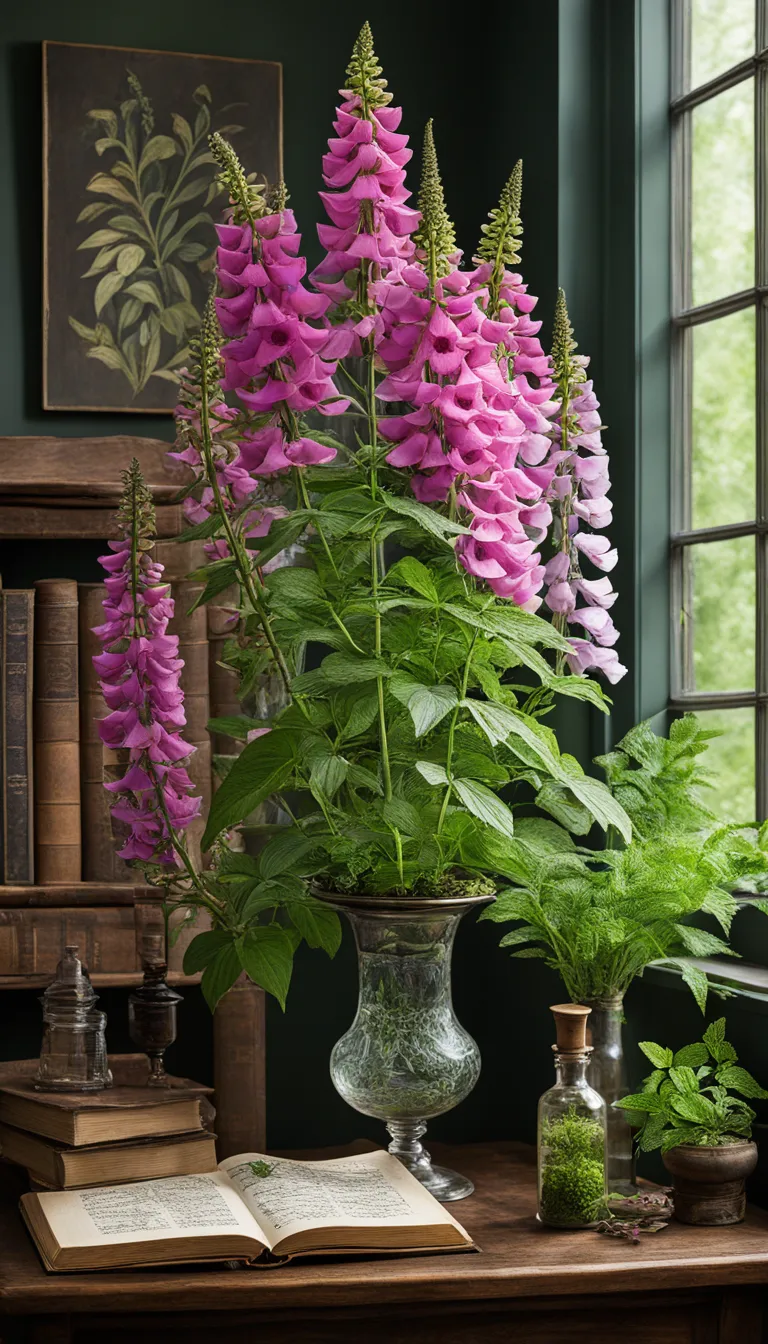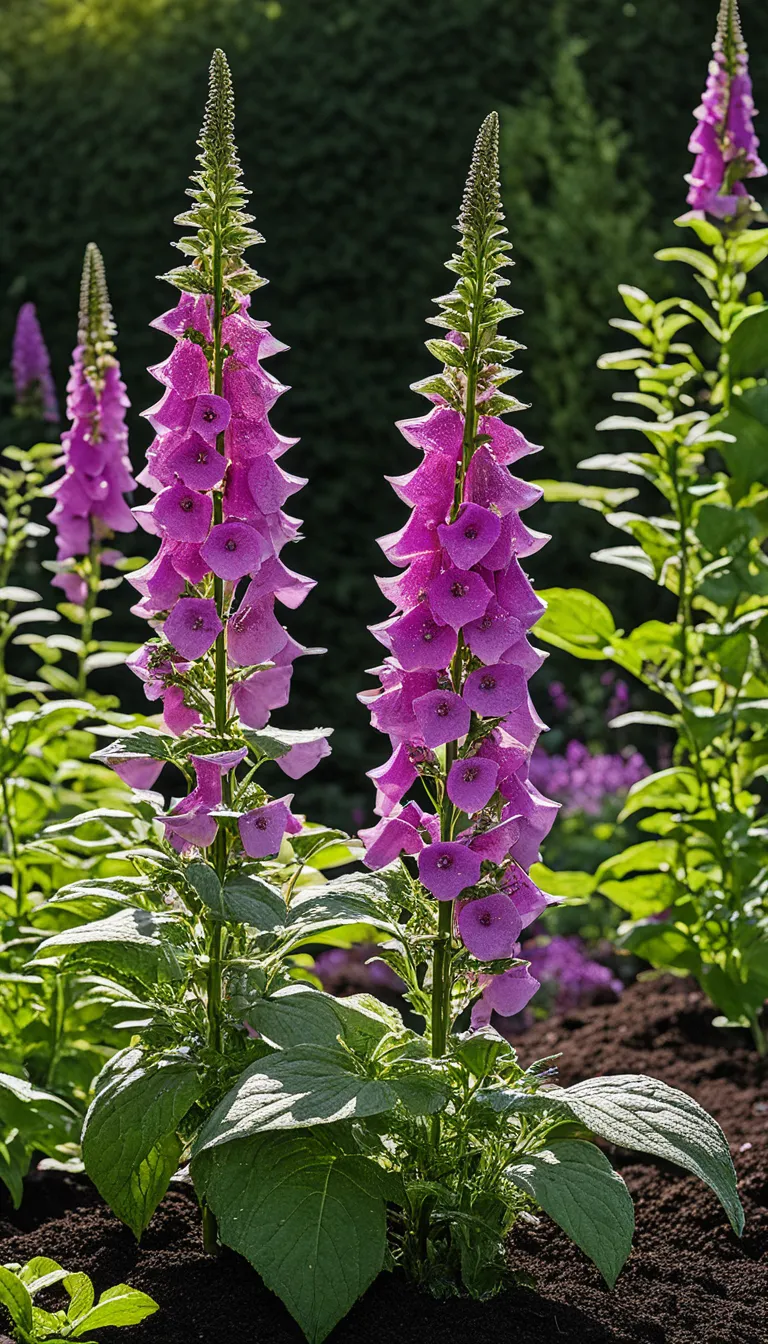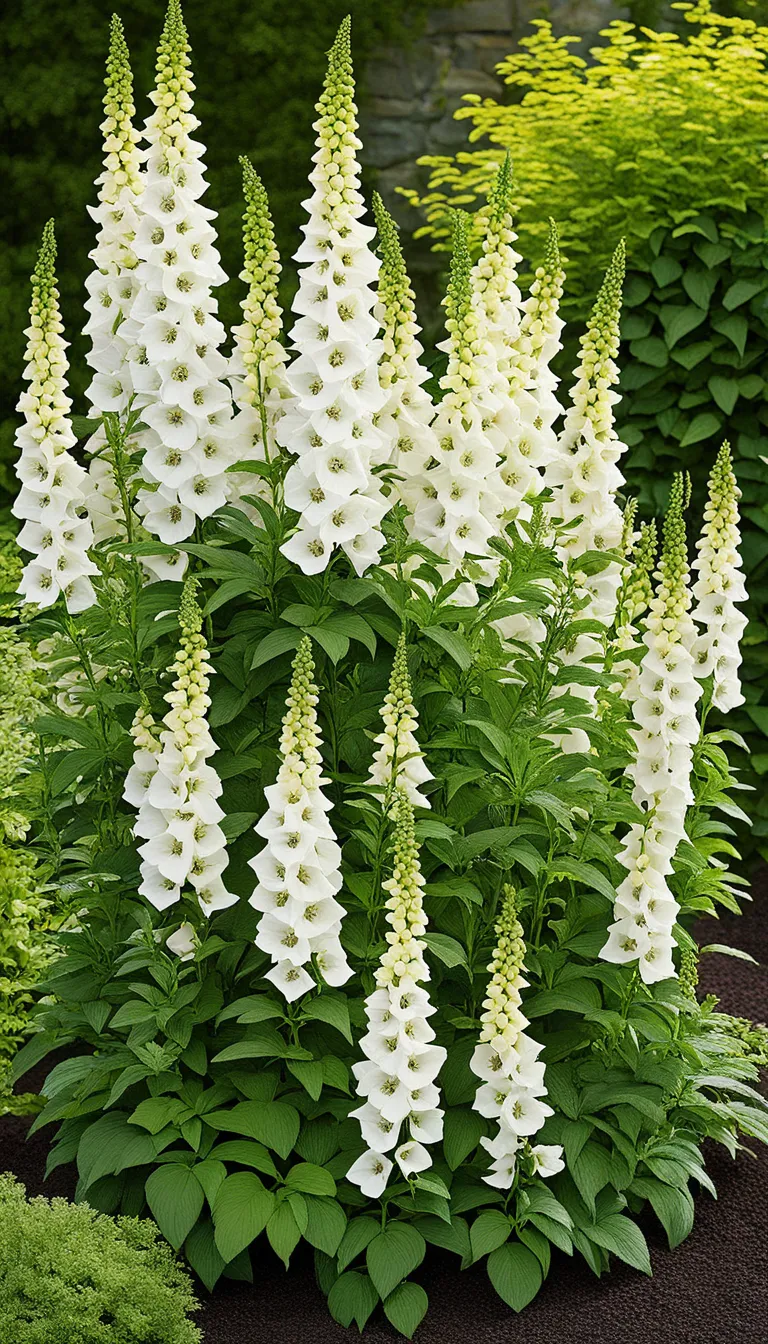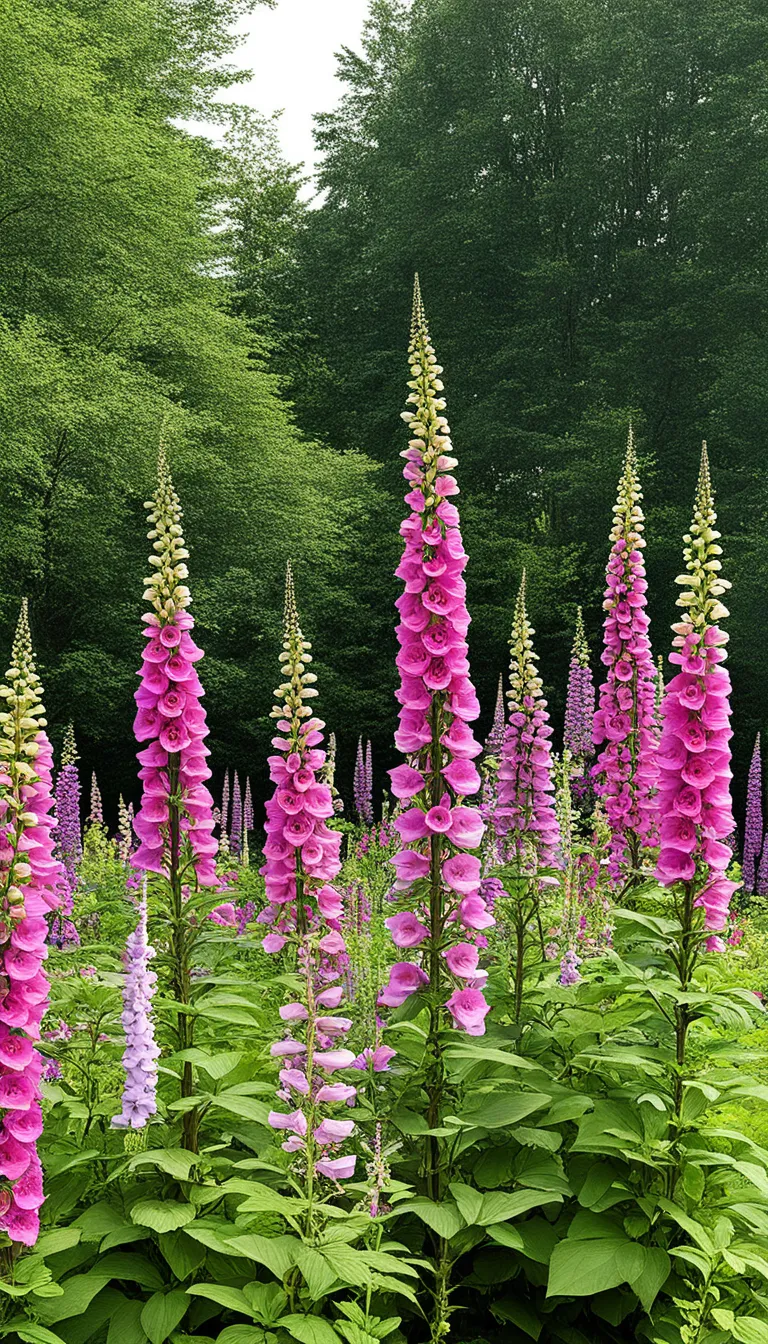, with its majestic spires of bell-shaped flowers, is not just a feast for the eyes but a plant steeped in history and utility. Imagine a garden where the surprise of vibrant colors meets the explosion of vertical interest – that’s what Foxglove brings to the table. As a perennial, it returns year after year, gracing gardens with its presence and offering a backdrop that can only be described as enchanting.
But Foxglove is more than just a pretty face. Did you know that this plant has been used in traditional medicine for centuries? Indeed, it has played a pivotal role in treating heart conditions with the discovery of the compound digitalin. Of course, with great power comes great responsibility, and it’s critical to remember that Foxglove is also toxic if ingested. Always handle with care, especially if you have curious pets or children.
When it comes to planting and care, Foxglove is surprisingly undemanding. It thrives in a variety of conditions, although it has a sweet spot for dappled sunlight and well-drained soil. A little bit of TLC goes a long way with this plant, ensuring that it’ll reward you with its spectacular display year after year. So, are you ready to add a touch of drama and a dash of history to your garden with Foxglove?

What is Foxglove?
Foxglove, known scientifically as Digitalis, is a plant that captures both the eye and the imagination with its impressive height and vibrant blooms. Native to Europe, western Asia, and northwestern Africa, Foxglove has made its way into hearts and gardens across the globe.
These beauties are not just a feast for the eyes; they have a storied history in traditional medicine. Foxglove is the original source of the heart medicine digoxin, used for treating heart conditions. However, it’s crucial to remember that all parts of the plant are toxic if ingested, so they should be handled with care.
In the wild, you’ll find Foxglove thriving in woodlands and moorlands, a testament to their love for cooler climates and a bit of shade. They’re a popular choice for adding height and drama to gardens, and their tubular flowers are a siren call to bees and other pollinators. Here’s a quick rundown:
- Botanical Name: Digitalis
- Common Names: Foxglove, Common Foxglove, Purple Foxglove, Lady’s Glove
- Type: Biennial or perennial
- Blooming Season: Early summer
- Color Varieties: Pink, purple, white, yellow, and red
- Height: Up to 6 feet
- Toxicity: Highly toxic if ingested
Whether you’re drawn to its towering grace or its medicinal backstory, Foxglove remains a garden favorite that, with the right care, can bring an explosion of color and life to your outdoor space.

How to Care for Foxglove?
Are you looking to add a touch of majesty to your garden? Look no further than the enchanting foxglove! With its towering spires and vibrant bell-shaped flowers, foxglove is a favorite among gardeners. But don’t let its grandeur intimidate you; caring for these beauties is simpler than you might think. Let’s dive into the essentials of foxglove care.
First things first, foxgloves thrive in the spotlight—the sunlight, that is. They prefer a spot in your garden that receives partial sun to light shade. Too much direct sunlight can be a bit overwhelming for them, so aim for that sweet spot where they can bask in the sun’s glow without getting sunburnt.
- Watering: Like many of us, foxgloves enjoy a good drink but don’t like to keep their feet wet. Ensure the soil is moist but well-drained. Overwatering can lead to root rot, so let the soil dry out slightly between watering.
- Soil: They’re not too picky, but they do prefer soil that’s rich and holds moisture well. A good mix of organic matter can do wonders for their growth.
- Fertilizing: A little snack can go a long way. Feed your foxgloves with a general-purpose fertilizer in the spring to help them grow strong and healthy.
Remember, foxgloves are like the royalty of the garden, and they demand their space. Plant them at a distance that allows them to grow without competing for resources. And here’s a pro tip: deadhead the spent flowers to encourage more blooms and prevent self-seeding if you want to keep your garden looking neat.
With these tips in mind, you’re well on your way to nurturing foxgloves that will explode with color and surprise your garden visitors with their stunning display. Happy gardening!

What are the Foxglove Varieties?
Foxglove, with its towering spires and speckled blooms, is a garden showstopper that comes in a variety of species and cultivars. Have you ever wondered about the different types that could add a surprise element and explosion of color to your garden? Let’s dive into the diverse world of Foxglove varieties!
Common Foxglove (Digitalis purpurea) is the classic variety that most gardeners are familiar with. It’s renowned for its majestic purple flowers that can reach up to 5 feet tall. But did you know there’s more to the Foxglove family? Here’s a list to pique your curiosity:
- Alba: A serene white-flowered version of the common Foxglove, perfect for adding a touch of elegance.
- Foxy: This variety is a bit more compact and blooms quicker, making it ideal for those who can’t wait to see their garden flourish.
- Sutton’s Apricot: Featuring softer, apricot-hued petals, it brings a warm, subtle color contrast to your green space.
- Gloxinioides: They boast blooms that resemble the tropical Gloxinia, with a broader range of colors and a more open bell shape.
For those who love organization, let’s put these varieties into a neat table to compare:
| Variety | Color | Height | Blooming Season |
|---|---|---|---|
| Alba | White | Up to 5 feet | Early to mid-summer |
| Foxy | Mixed colors | 2-3 feet | Early summer |
| Sutton’s Apricot | Apricot | Up to 5 feet | Early to mid-summer |
| Gloxinioides | Various | Up to 5 feet | Early to mid-summer |
Whether you’re looking for a stunning backdrop for your perennial border or a charming focal point for your cottage garden, there’s a Foxglove variety that’s perfect for you. Remember, while Foxgloves are a treat for the eyes, they’re also toxic if ingested, so always handle with care!





